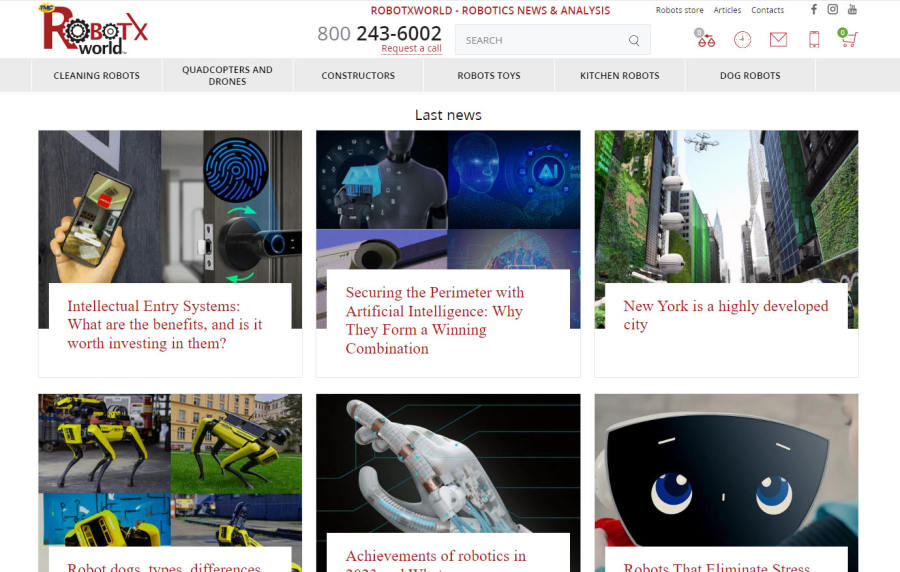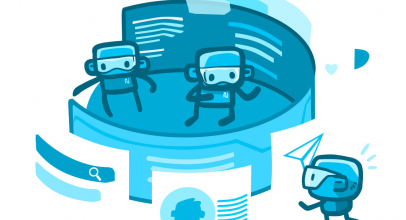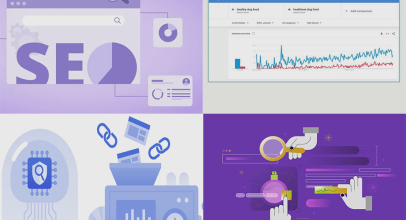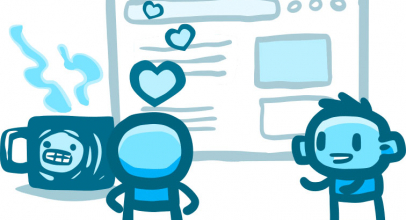The implementation of your own online store is a key step towards increasing the scale of the company and expanding sales of goods not only at the local level within a city or region, but also on the global market.
When ordering website development, it is extremely important to have an idea of how the whole process proceeds in order to actively participate in monitoring the situation and be confident in the final result. Starting with an idea, this journey ends with the creation of a successful and ready-to-use project. But what happens in the intermediate stages?
Let's look at a successful example of a developed online store - a robotics store in the USA at https://robotxworld.com. Now let's give an overview of how this store was created:
Technical task
-
Graphic content of the project:
-
1.1. Development of a unique design that reflects the brand identity.
1.2. Using modern and aesthetically pleasing elements in the interface.
1.3. Responsive design for optimal display on various devices. -
Functional requirements:
2.1. Determining the target audience (TA) and developing an interface focused on the needs of the target audience.
2.2. Description of the main objectives of the project, including the functions provided to the end user.
2.3. Setting technical requirements for system management, including administrative controls and content moderation. -
General provisions and features of cooperation:
3.1. Defining the roles and responsibilities of all participants in the process.
3.2. Establish communication and reporting mechanisms.
3.3. Determining the timing and stages of development with the possibility of adjustment if necessary. -
Requirements for software and technical implementation:
4.1. Selection and use of modern development technologies.
4.2. Ensuring data security and protection from external attacks.
4.3. Integration with necessary external services and platforms. -
Conditions for delivery of the project:
5.1. Conducting testing for compliance with stated requirements.
5.2. Preparation of documentation, including user manual and technical documentation.
5.3. Transfer of all necessary rights and materials to the customer.
5.4. Training of customer personnel if necessary.
This technical specification is a fundamental document defining key aspects of project development. Any changes to requirements must be agreed upon and documented by both parties.
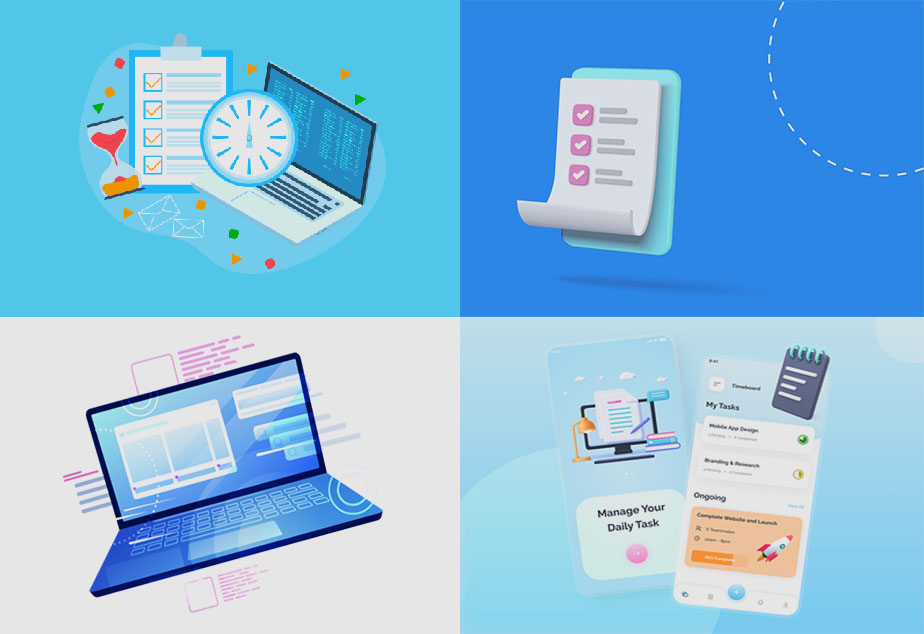
Marketing Research and Strategy
Marketing research and strategy for the successful launch of an online store are key stages at which strategic decisions are made that have a direct impact on the final result.
Customer participation at the development stage is an active and integral element of the entire process. It is necessary to carefully analyze all information about the company, paying attention to the following aspects:
-
Product Analytics
The initial stage at which developers dive into the essence of the client’s business, studying the features of the proposed product or service. -
Studying trends
A detailed analysis of global and local trends is carried out, determining the positioning of a product or service in the market, which allows you to build competitiveness. -
Analysis of competitors
A thorough analysis of competitors, their methods of interaction with the target audience is carried out, as well as the formation of a unique selling proposition (USP), which helps to increase the efficiency of the online store. -
Defining the target audience
The success of a business depends on a clear understanding of the target audience. The online store must accurately reach the target audience, for which a detailed portrait of the client is compiled. Behavioral characteristics, problems, goals, motivation and other factors are identified that allow for a deep understanding of consumer behavior. -
Development of a marketing strategy
Based on the data obtained, a marketing strategy is developed, which determines further steps in subsequent stages of work.
By following the developed marketing strategy, the online store will be able to effectively interact with the market and attract its target audience, ensuring successful business development.
Prototyping and design
Designing an online store begins with the careful development of a prototype, covering the structure of the site, its functionality and adaptability for various devices. The effectiveness of implementation directly depends on the quality of the developed prototype.
A group of designers is engaged in conceptualization, taking into account current trends in the field of web development, style solutions, corporate colors and elements.
This allows:
-
Visualize the site structure for programmers
A clear presentation of the design concept facilitates mutual understanding with developers, speeding up the implementation process. -
Refine navigation elements in detail
The emphasis is on carefully studying navigation elements, as well as adapting the design for mobile devices. -
Determine how a visitor interacts with an online store
Design involves developing user interaction with site elements, which contributes to a better experience with customers.
The prototype can be graphic, presented in the form of diagrams, drawings and plans, as well as interactive, which gives users the opportunity to evaluate the functionality and ease of use of the site.
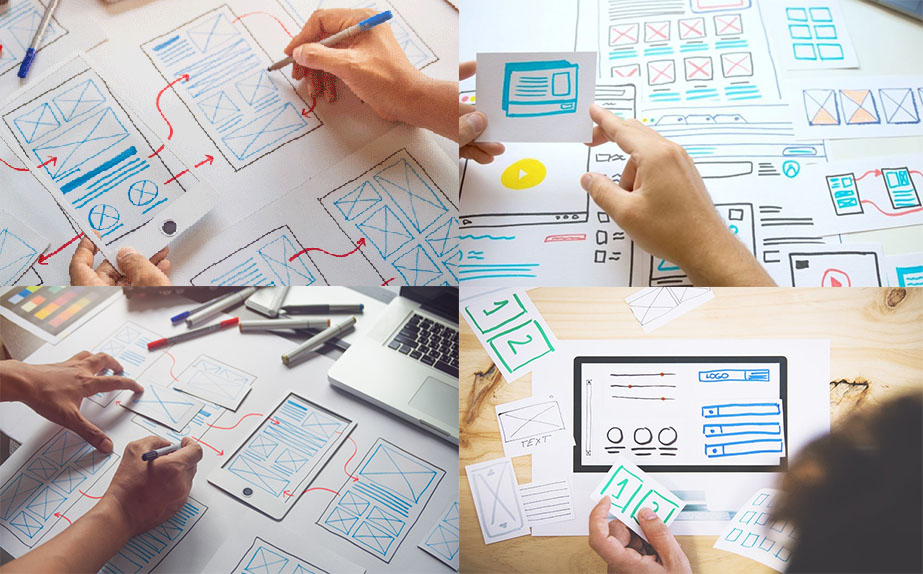
Work on UX/UI design includes detailed design of the main page, internal pages and other store elements. The next stage is the technical implementation of the project, turning the initial layout into a full-fledged working website.
Filling content
Programming and layout in the process of developing an online store begin with translating the design layout into a structured HTML format. A team of programmers is working on creating basic elements such as the home page, catalog, product cards, store sections, order forms, and many others.
At the same time, an administrative panel is formed that performs the tasks specified in the technical brief. In the case of developing an online store, this panel provides functionality for adding products, managing product groups and other necessary capabilities.
Despite the apparent efficiency of this stage, it actually requires the most attention and time in the process of project implementation. Programmers must carefully write each element to avoid technical errors. Therefore, writing a clear technical specification plays a key role in providing developers with clarity about the structure and requirements of the project.
Testing
The testing stage when creating an online store is aimed at identifying both minor errors and serious violations. A QA specialist develops a testing plan and uses checklists to accurately identify errors. Not only the technical compliance and correct functioning of the site is checked, but also its visual perception, as well as compliance with the requirements of the technical specifications.
Testing is necessary for the following purposes:
-
Checking display on various devices
Guaranteeing correct display of the online store on all devices listed in the technical specifications. -
Compatibility checks with various browsers and operating systems
Ensuring that the site works reliably in various browsers and operating systems available. -
Compliance with the parameters from the technical specifications
Checking the loading speed, performance and other parameters specified in the technical specifications. -
Analysis of functional user behavior
Conviction that the site meets the goals set during design development. -
Usability tests
Assess the usability of a website and its interface for the end user. -
Monitoring the operation of third-party services (CRM connection)
Guaranteeing the correct operation of all external services, such as customer management systems (CRM). -
Finding technical errors
Actively identifying and documenting technical errors.
At the testing stage, a bug report is created, including a list of detected errors. They can be either critical, affecting the basic functionality and performance of the site, or less significant. In the latter case, recommendations and suggestions are provided to improve the site.
Promotion
After the successful launch of the project, it is important to continue cooperation with the developers, since the existing site needs effective promotion.
At this stage, the key tasks are:
-
Creation of SEO-optimized content
Development of content that takes into account the requirements of search engines to ensure good indexing and high ranking in search results. -
Setting up advertising campaigns in Google Adwords
Effective use of Google Adwords advertising tools to attract the target audience and increase site visibility. -
Brand promotion in social networks (SMM)
Active work to strengthen the brand’s presence in social media, attracting attention and interacting with potential customers.
Thanks to a well-developed promotion strategy, the company quickly makes itself known in the market and becomes widely known. As a result of this process, there is an increase in the flow of new customers, which contributes to the long-term success of the business.

